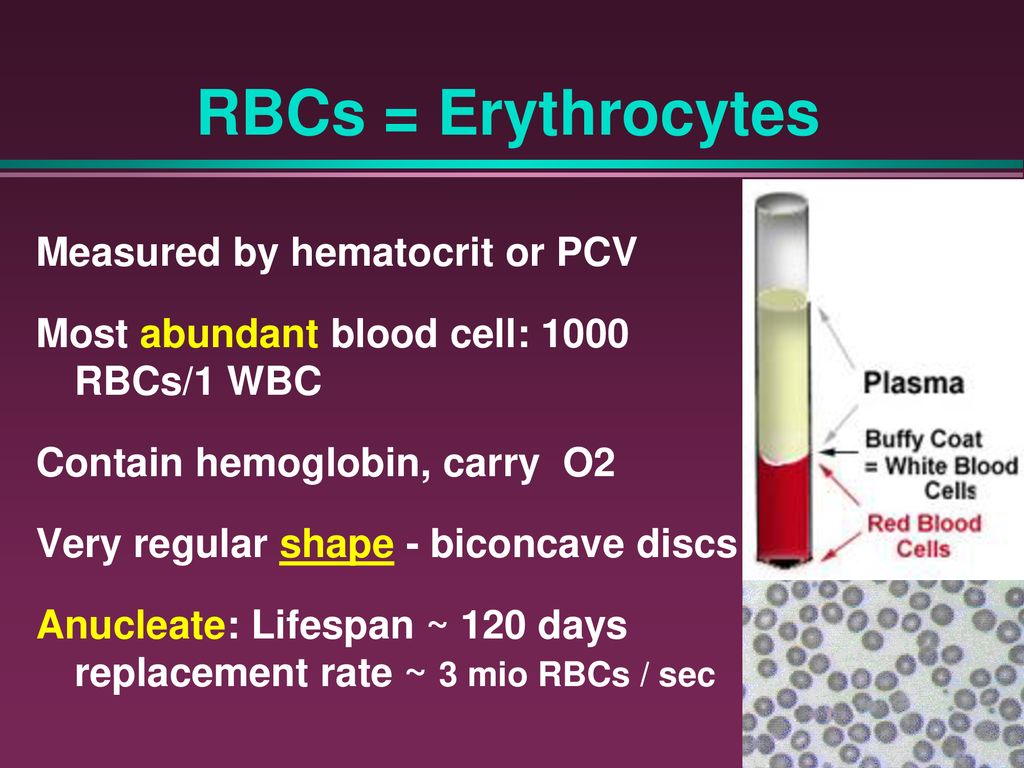Hematocrit blood test interpret. Interpreting Hematocrit and Hemoglobin: A Comprehensive Guide to Blood Test Results
What do hematocrit and hemoglobin levels indicate in a blood test. How are these values related to overall health. What are the normal ranges for hematocrit and hemoglobin in adults and children. How can abnormal results impact diagnosis and treatment.
Understanding the Basics: Hematocrit and Hemoglobin in Blood Tests
Blood tests are crucial diagnostic tools that provide valuable insights into an individual’s health status. Among the various components analyzed in a complete blood count (CBC), hematocrit and hemoglobin play pivotal roles in assessing overall well-being. These two parameters are closely related and offer essential information about the oxygen-carrying capacity of blood.
What is Hematocrit?
Hematocrit is a measurement that indicates the percentage of red blood cells in a given volume of whole blood. It is expressed as a ratio or percentage and reflects the proportion of blood composed of red blood cells compared to other components like plasma and white blood cells.

What is Hemoglobin?
Hemoglobin is a protein found within red blood cells that is responsible for transporting oxygen throughout the body. It binds to oxygen in the lungs and delivers it to tissues and organs, playing a crucial role in maintaining cellular function and overall health.
Normal Ranges for Hematocrit and Hemoglobin
Understanding the normal ranges for hematocrit and hemoglobin is essential for interpreting blood test results accurately. These values can vary based on factors such as age, gender, and overall health status.
Hematocrit Normal Ranges
- Adult males: 40.7% to 50.3%
- Adult females: 36.1% to 44.3%
- Newborns: 45% to 61%
- Infants: 32% to 42%
Hemoglobin Normal Ranges
- Adult males: 13.5 to 17.5 grams per deciliter (g/dL)
- Adult females: 12.0 to 15.5 g/dL
- Newborns: 14 to 24 g/dL
- Infants: 9.5 to 13 g/dL
Do these ranges differ for athletes or individuals living at high altitudes. Yes, athletes and people residing in high-altitude areas may have slightly elevated hematocrit and hemoglobin levels due to increased red blood cell production in response to greater oxygen demands.
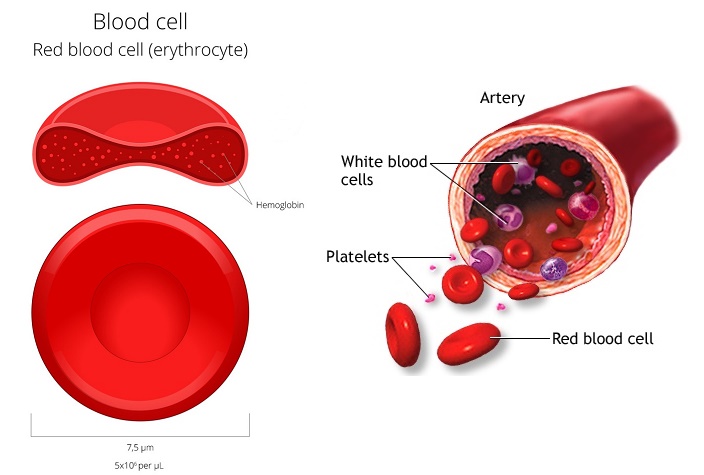
Factors Influencing Hematocrit and Hemoglobin Levels
Several factors can impact hematocrit and hemoglobin levels, leading to variations in blood test results. Understanding these influences is crucial for accurate interpretation and diagnosis.
Physiological Factors
- Age: Levels tend to be higher in newborns and decrease as individuals age
- Gender: Men typically have higher levels than women due to hormonal differences
- Pregnancy: Levels may decrease during pregnancy due to increased blood volume
- Altitude: Living at high altitudes can lead to increased red blood cell production
- Hydration status: Dehydration can temporarily elevate hematocrit levels
Medical Conditions
- Anemia: Can cause decreased hematocrit and hemoglobin levels
- Polycythemia: May result in elevated hematocrit and hemoglobin levels
- Chronic diseases: Conditions like kidney disease or certain types of arthritis can affect blood cell production
- Nutritional deficiencies: Iron, vitamin B12, or folate deficiencies can impact red blood cell production
Interpreting Low Hematocrit and Hemoglobin Levels
Low hematocrit and hemoglobin levels often indicate anemia, a condition characterized by insufficient red blood cells or hemoglobin to meet the body’s oxygen demands. Various factors can contribute to low levels, and understanding these causes is essential for proper diagnosis and treatment.

Common Causes of Low Levels
- Iron deficiency anemia
- Vitamin B12 or folate deficiency
- Chronic diseases (e.g., kidney disease, cancer)
- Blood loss (e.g., heavy menstrual periods, gastrointestinal bleeding)
- Bone marrow disorders
- Hemolytic anemia
How do low hematocrit and hemoglobin levels affect the body. Reduced oxygen-carrying capacity can lead to fatigue, weakness, shortness of breath, dizziness, and pale skin. In severe cases, it may impact cognitive function and cardiovascular health.
Understanding High Hematocrit and Hemoglobin Levels
Elevated hematocrit and hemoglobin levels can indicate various conditions, ranging from benign causes to more serious underlying health issues. Identifying the root cause is crucial for appropriate management and treatment.
Potential Causes of High Levels
- Dehydration
- Polycythemia vera (a blood disorder characterized by excessive red blood cell production)
- Chronic obstructive pulmonary disease (COPD)
- Congenital heart defects
- Living at high altitudes
- Smoking
Can high hematocrit and hemoglobin levels be dangerous. Yes, excessively high levels can increase blood viscosity, potentially leading to blood clots, stroke, or heart attack. Proper diagnosis and management are essential to mitigate these risks.

The Relationship Between Hematocrit and Hemoglobin
Hematocrit and hemoglobin are closely related parameters that provide complementary information about blood composition and oxygen-carrying capacity. Understanding their relationship is crucial for comprehensive blood test interpretation.
Correlation Between Hematocrit and Hemoglobin
Typically, hematocrit values are approximately three times the hemoglobin concentration. For example, if a patient’s hemoglobin level is 15 g/dL, their hematocrit would be expected to be around 45%. This relationship is not always exact but serves as a useful guideline for assessing the consistency of blood test results.
Discrepancies and Their Significance
When the relationship between hematocrit and hemoglobin deviates significantly from the expected 3:1 ratio, it may indicate underlying health issues or laboratory errors. Some potential causes of discrepancies include:
- Lipemia (excess lipids in the blood)
- Severe liver disease
- Certain hemoglobinopathies (disorders affecting hemoglobin structure)
- Sample handling or processing errors
How do healthcare providers use the hematocrit-to-hemoglobin ratio. This ratio helps validate test results and can provide additional diagnostic information. Significant deviations may prompt further investigation or repeat testing to ensure accurate results.
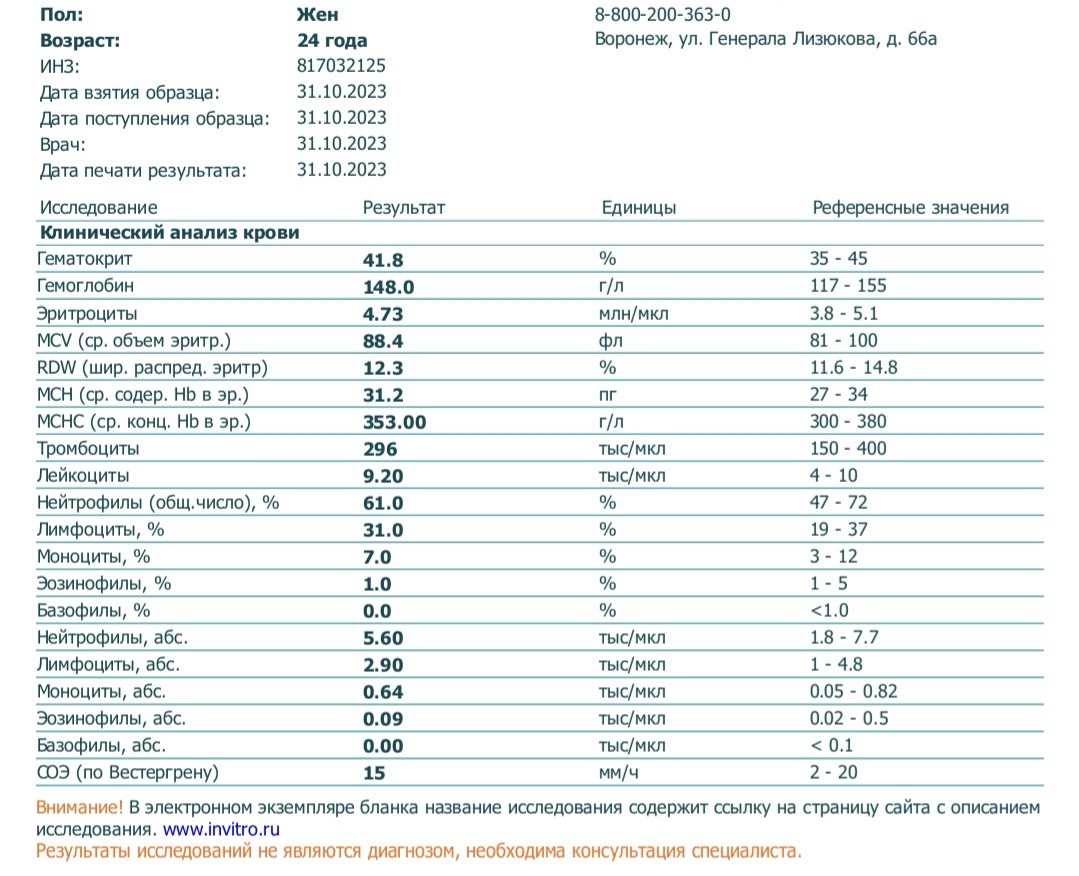
Diagnostic Value of Hematocrit and Hemoglobin Tests
Hematocrit and hemoglobin tests offer valuable insights into various aspects of health and can aid in the diagnosis of numerous conditions. These tests are often performed as part of routine health screenings or to investigate specific symptoms.
Conditions Diagnosed Using Hematocrit and Hemoglobin Tests
- Anemia: Various types, including iron-deficiency anemia, vitamin B12 deficiency anemia, and hemolytic anemia
- Polycythemia: Both primary (polycythemia vera) and secondary forms
- Dehydration: Elevated levels can indicate fluid loss
- Chronic diseases: Kidney disease, liver disease, and certain types of cancer can affect these values
- Nutritional deficiencies: Iron, vitamin B12, and folate deficiencies can be detected
- Blood disorders: Thalassemia, sickle cell disease, and other hemoglobinopathies
How frequently should hematocrit and hemoglobin levels be tested. For healthy individuals, annual testing as part of a routine physical examination is often sufficient. However, more frequent monitoring may be necessary for those with chronic conditions or ongoing health concerns.
:max_bytes(150000):strip_icc()/hemoglobin-level-5211543-DD_Final-5839bd4fad49464584cc69c5460cb0eb.jpg)
Treatment Approaches Based on Hematocrit and Hemoglobin Results
The results of hematocrit and hemoglobin tests guide healthcare providers in developing appropriate treatment plans. The specific approach depends on the underlying cause of abnormal levels and the severity of the condition.
Treatment for Low Levels
- Iron supplementation for iron-deficiency anemia
- Vitamin B12 injections or supplements for B12 deficiency
- Folic acid supplementation for folate deficiency
- Treating underlying chronic diseases
- Blood transfusions for severe anemia
- Erythropoiesis-stimulating agents to boost red blood cell production
Management of High Levels
- Phlebotomy (blood removal) for polycythemia vera
- Hydration therapy for dehydration-induced elevations
- Oxygen therapy for altitude-related increases
- Smoking cessation programs
- Treatment of underlying conditions (e.g., COPD, heart defects)
Can lifestyle changes impact hematocrit and hemoglobin levels. Yes, adopting a balanced diet rich in iron, vitamins, and minerals, staying hydrated, exercising regularly, and avoiding smoking can positively influence these blood parameters.
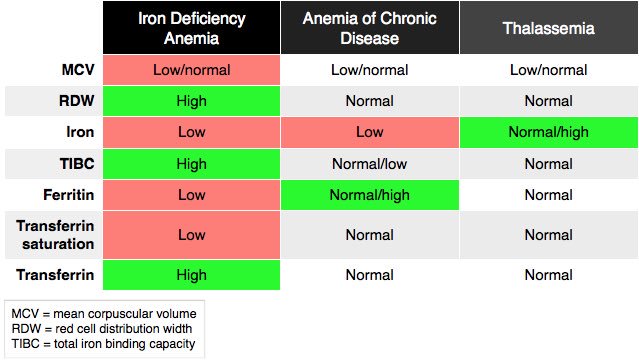
The Role of Hematocrit and Hemoglobin in Athletic Performance
Hematocrit and hemoglobin levels play a significant role in athletic performance, particularly in endurance sports. Understanding their impact can help athletes optimize their training and performance strategies.
Impact on Endurance and Performance
Higher hematocrit and hemoglobin levels within the normal range can enhance oxygen delivery to muscles, potentially improving endurance and overall performance. This relationship has led to controversial practices such as blood doping in competitive sports.
Natural Ways to Optimize Levels
- Altitude training: Exposure to high altitudes can stimulate red blood cell production
- Proper nutrition: Ensuring adequate intake of iron, vitamins, and minerals
- Hydration management: Maintaining optimal hydration status
- Periodized training: Structured training programs that allow for recovery and adaptation
- Sleep optimization: Adequate sleep supports overall health and recovery
Are there legal performance-enhancing techniques related to hematocrit and hemoglobin. Yes, altitude training and proper nutrition are legal and ethical methods to naturally optimize these blood parameters for improved athletic performance.

Future Directions in Hematocrit and Hemoglobin Research
As our understanding of blood composition and its impact on health continues to evolve, researchers are exploring new avenues for utilizing hematocrit and hemoglobin measurements in diagnostics and treatment.
Emerging Research Areas
- Personalized medicine: Tailoring treatment based on individual hematocrit and hemoglobin profiles
- Non-invasive monitoring techniques: Developing methods for continuous, real-time measurement of blood parameters
- Artificial intelligence in result interpretation: Enhancing diagnostic accuracy through machine learning algorithms
- Gene therapy for hemoglobin disorders: Targeting genetic causes of abnormal hemoglobin production
- Nanomedicine applications: Developing targeted therapies for blood disorders
How might advances in hematocrit and hemoglobin research impact future healthcare. These developments could lead to more precise diagnoses, personalized treatment plans, and improved management of various blood disorders and related conditions.

In conclusion, hematocrit and hemoglobin tests provide crucial information about blood composition and oxygen-carrying capacity. Understanding these parameters, their normal ranges, and factors influencing their levels is essential for accurate interpretation of blood test results. By leveraging this knowledge, healthcare providers can make informed decisions about diagnosis, treatment, and ongoing patient care. As research in this field continues to advance, we can expect even more sophisticated approaches to utilizing these vital blood parameters in promoting health and managing disease.
Interpreting Your Blood Test Results: A Concise Guide
Posted
by Marc Shomer
on Apr 17, 2023
in Blood Test
|
No Comments
How to Interpret Your Blood Test Results: A Quick Guide
Learning to interpret your blood test results empowers you to understand your body. So what does it all mean? In this guide, we address some of the most common items on a blood test report.
To learn more about what blood test results mean, call 626-304-0404 today!
Complete Blood Count (CBC)
Blood cell counts evaluate the parts of the blood:
- White blood cells (WBC) work for your immune system by fighting infections, but allergic reactions can also produce them. High white blood cell count is also linked to heart disease.
- Red blood cells (RBC) Low levels of red blood cells might indicate anemia, nutritional deficiencies, kidney problems, or bone marrow damage.
 High levels might mean simple dehydration but could also point to kidney or heart problems or the onset of fatty liver disease.
High levels might mean simple dehydration but could also point to kidney or heart problems or the onset of fatty liver disease. - Hemoglobin levels measure how well your blood carries oxygen. Mean corpuscular hemoglobin count (MCHC) measures how much of this protein each red blood cell contains.
- Hematocrit describes the volume of red blood cells compared to the other components, like blood plasma. Low hematocrit levels may indicate recent blood loss, vitamin deficiency, or anemia. High levels could point to dehydration or heart disease.
- Platelets bind blood into clots to stop bleeding. Without enough platelets in your system, you develop bleeding disorders, and with too many, you get clotting disorders. This test provides evidence of autoimmune diseases or bone marrow disorders.
Comprehensive Metabolic Panel CMP
Metabolism refers to the chemical components that help regulate your body:
- Glucose levels measure blood sugar and indicate how your body processes sugar, screening for diabetes.

- Electrolytes are essential minerals that affect hydration, acidity, and muscle function and also relate to the health of organs that require them, such as calcium for bones.
- Bilirubin indicates broken hemoglobin and causes jaundice
- Albumin is the primary component of blood plasma. Low levels hint at malnutrition, inflammation, or liver and kidney diseases.
- Creatine supplies energy to muscles. Your kidneys remove creatine from the blood, so high creatine levels warn of kidney problems.
Lipid Panel
Lipids, the medical term for fats, serve vital functions in the body. Here’s what lipid levels mean in blood samples:
- Triglycerides come from the liver and bounce high from sugar, fat, and alcohol. However, liver and thyroid disease and genetic conditions may also increase triglycerides.
- High-density lipoprotein (HDL), known as “good cholesterol”, lowers the risk of cardiovascular disease.

- Low-density lipoprotein (LDL), or “bad cholesterol,” repairs cells, but high levels can clog arteries and cause coronary artery disease.
Schedule Fast, Accurate Blood Tests
Blood test results provide clues to various system disorders or excellent health. While your doctor should discuss blood test results with you, learning to read these results helps you understand, and advocate for, your own health.
Do you need to schedule a blood test? Call Advance Urgent Care Of Pasadena at 626-304-0404 today.
Hematocrit
Medical Tests
Definition
Hematocrit is a blood test that measures how much of a person’s blood is made up of red blood cells. This measurement depends on the number of and size of the red blood cells.
Alternative Names
HCT
How the Test is Performed
A blood sample is needed.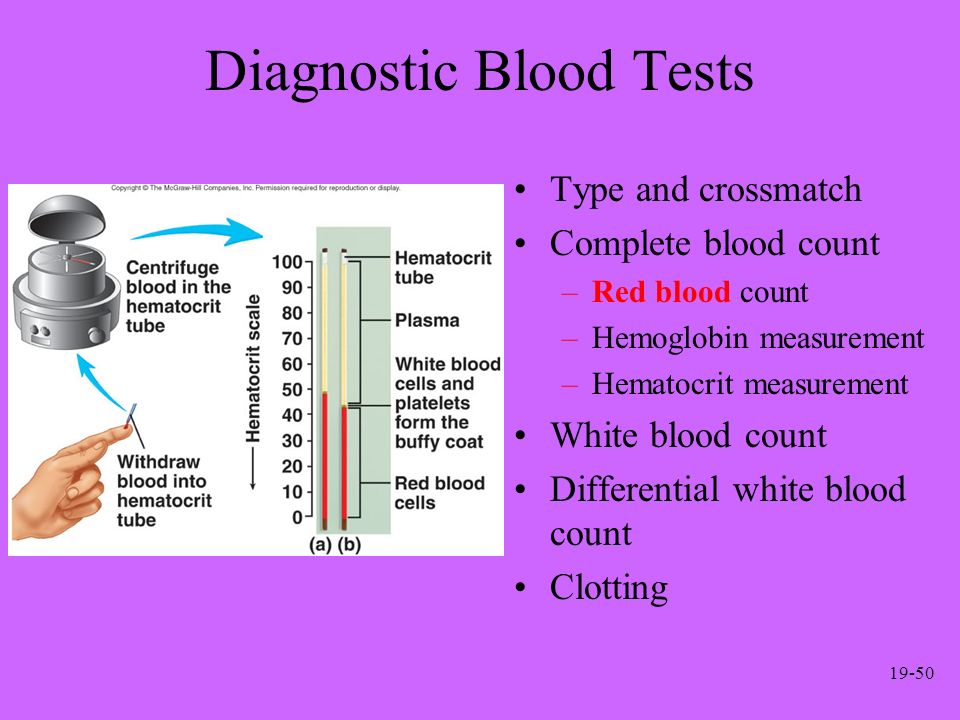
How to Prepare for the Test
No special preparation is necessary for this test.
How the Test will Feel
When the needle is inserted to draw blood, some people feel moderate pain. Others feel only a prick or stinging. Afterward, there may be some throbbing or a slight bruise. This soon goes away.
Why the Test is Performed
The hematocrit is almost always done as part of a complete blood count (CBC).
Your health care provider may recommend this test if you have signs of or are at risk for anemia. These include having:
- Grumpiness or tiredness
- Headaches
- Problems concentrating
- Poor nutrition
- Heavy menstrual periods
- Blood in your stools, or vomit (if you throw up)
- Treatment for cancer
- Leukemia or other problems in the bone marrow
- Chronic medical problems, such as kidney disease or certain types of arthritis
Normal Results
adam.com”>Normal results vary, but in general they are:- Male: 40.7% to 50.3%
- Female: 36.1% to 44.3%
For babies, normal results are:
- Newborn: 45% to 61%
- Infant: 32% to 42%
The examples above are common measurements for results of these tests. Normal value ranges vary slightly among different laboratories. Some labs use different measurements or test different samples. Talk to your provider about the meaning of your specific test results.
What Abnormal Results Mean
Low hematocrit may be due to:
- Anemia
- Bleeding
- Destruction of red blood cells
- Leukemia
- Malnutrition
- Too little iron, folate, vitamin B12, and vitamin B6 in the diet
- Too much water in the body
High hematocrit may be due to:
Risks
There is little risk involved with having your blood taken.Veins and arteries vary in size from one person to another and from one side of the body to the other. Obtaining a blood sample from some people may be more difficult than from others.
Other risks associated with having blood drawn are slight but may include:
- Excessive bleeding
- Fainting or feeling lightheaded
- Multiple punctures to locate veins
- Hematoma (blood buildup under the skin)
- Infection (a slight risk any time the skin is broken)
References
adam.com”>Chernecky CC, Berger BJ. H. Hematocrit (Hct) – blood. In: Chernecky CC, Berger BJ, eds. Laboratory Tests and Diagnostic Procedures. 6th ed. St Louis, MO: Elsevier Saunders; 2013:620-621.Maheshwari A, Carlo WA. Blood disorders. In: Kliegman RM, Stanton BF, St. Geme JW, Schor NF, eds. Nelson Textbook of Pediatrics. 20th ed. Philadelphia, PA: Elsevier; 2016:chap 103.
Vajpayee N, Graham SS, Bem S. Basic examination of blood and bone marrow. In: McPherson RA, Pincus MR, eds. Henry’s Clinical Diagnosis and Management by Laboratory Methods. 23rd ed. St Louis, MO: Elsevier; 2017:chap 30.
Review Date: 02/18/2018
The information provided herein should not be used during any medical emergency or for the diagnosis or treatment of any medical condition. A licensed physician should be consulted for diagnosis and treatment of any and all medical conditions. Call 911 for all medical emergencies. Links to other sites are provided for information only — they do not constitute endorsements of those other sites. Copyright ©2019 A.D.A.M., Inc., as modified by University of California San Francisco. Any duplication or distribution of the information contained herein is strictly prohibited.
Links to other sites are provided for information only — they do not constitute endorsements of those other sites. Copyright ©2019 A.D.A.M., Inc., as modified by University of California San Francisco. Any duplication or distribution of the information contained herein is strictly prohibited.
Information developed by A.D.A.M., Inc. regarding tests and test results may not directly correspond with information provided by UCSF Health. Please discuss with your doctor any questions or concerns you may have.
Deciphering a blood test on the analyzer – Article in Yekaterinburg
Modern hematological analyzers have the ability to decipher from 5 to 24 blood parameters:
- WBC (white blood cells – white blood cells, leukocytes). The indicator characterizes the absolute content of leukocytes.
- RBC (red blood cells – red blood cells, erythrocytes) shows the absolute content of erythrocytes in the blood.
- HGB (Hb, hemoglobin, hemoglobin) – the concentration of hemoglobin in whole blood.

- HCT (hematocrit, hematocrit). Hematocrit determines the ratio of the volume of formed elements to plasma.
- PLT (platelets, platelets) – absolute number of platelets
Erythrocyte indices Using the analysis, you can determine the presence of microcytosis, normocytosis, macrocytosis.
- LYM% (LY%) (lymphocyte) — percentage of lymphocyte concentration.
- LYM# (LY#) (lymphocyte) — absolute number of lymphocytes.
- MXD% – relative percentage of a mixture consisting of monocytes, basophils and eosinophils.
- MXD# is the absolute amount of a mixture consisting of monocytes, basophils and eosinophils.
- NEUT% (NE%) (neutrophils) – percentage of neutrophils.
- NEUT# (NE#) (neutrophils) — absolute number of neutrophils.
- MON% (MO%) (monocyte) – percentage of monocytes
- MON# (MO#) (monocyte) – absolute number of monocytes
- EO% – relative percentage of eosinophils.

- EO# is the absolute number of eosinophils.
- BA% – relative percentage of basophils.
- BA# is the absolute number of basophils.
- IMM% – relative percentage of immature granulocytes.
- IMM# is the absolute number of immature granulocytes.
- ATL% – relative percentage of atypical lymphocytes.
- ATL# is the absolute number of atypical lymphocytes.
- GR% – relative percentage of granulocytes.
- GR# is the absolute number of granulocytes.
Erythrocyte indices
- RBC/HCT — mean volume of erythrocytes.
- HGB/RBC is the average amount of hemoglobin in an erythrocyte.
- HGB/HCT — average saturation of erythrocyte hemoglobin.
- RDW – Red cell Distribution Width – “the width of the red blood cell distribution.” Characterizes the heterogeneity of erythrocytes.
- RDW-SD is the standard deviation of the distribution width of erythrocytes by volume.
- RDW-CV – coefficient of variation in the relative width of the distribution of erythrocytes by volume.

- P-LCR is a coefficient indicating the number of large platelets.
- ESR (ESR) (erythrocyte sedimentation rate) is a marker of pathology.
Based on various blood parameters, modern hematology analyzers build histograms that allow you to analyze the stages of the pathological process and make decisions on its elimination.
Normal blood counts differ in patients depending on gender, age, and additional factors (lifestyle, bad habits, etc.).
Attention! Medica Group sells automated microbiology analyzers and culture vials, but does not provide a service to to collect or interpret blood test results.
Share link:
Go back she® LABSTAR 100
Explanation of test values
There are many options for taking a blood test. Blood is taken for various purposes, to obtain indicators of the level of various elements in the blood, as well as other related processes.
An accurate blood test will help you determine what is wrong in the body in time and tell the doctor what measures need to be taken to improve your condition. A blood test also helps to monitor how medications affect the body.
Consider how the indicators are deciphered:
Leukocyte indicators:
- WBC (leukocytes) – white or colorless blood cells of various sizes. The main function of white blood cells is to resist infections, viruses, bacteria, etc. Leukocytes are divided into 5 types: neutrophils, lymphocytes, monocytes, eosinophils and basophils.
- LYM (lymphocytes) are the main cells of the human immune system. Lymphocytes are a type of white blood cell that is produced in the lymphatic system and bone marrow. According to their functions, lymphocytes are divided into B – lymphocytes that produce antibodies, T-lymphocytes that fight infections and NK lymphocytes that control the quality of body cells.

- LYM% – relative content of lymphocytes.
- MON (monocytes) is one of the types of phagocytes, the largest type of leukocytes. Monocytes are formed in the bone marrow. These cells are involved in the regulation and differentiation of hematopoiesis, then go to the tissues of the body and there they turn into macrophages. Monocytes are of great importance, as they are responsible for the initial activation of the entire human immune system.
- MON% – relative content of monocytes.
- NEU (neutrophils) – neutrophils are generated in the bone marrow. Their service life in the blood lasts several hours. Neutrophils destroy microbes (phagocytosis).
- NEU% is the relative content of neutrophils.
- EOS (eosinophils) – white blood cells, characterized by a specific orange color. They take part in the immune system. Elevated in infections with parasites.
 There is a tendency to appear with allergies and asthma.
There is a tendency to appear with allergies and asthma. - EOS% – relative content of eosinophils.
- BAS (basophils) is one of the large forms of leukocytes in the blood related to the immune system. The main function is the expansion of blood vessels during infection.
- BAS% – relative content of basophils.
Erythrocyte indicators:
- RBC (erythrocytes) – red blood cells that carry hemoglobin. The main function of erythrocytes is to transport oxygen from the lungs to all tissues and carbon dioxide from the tissues back to the lungs. Few red blood cells means little hemoglobin. Too little hemoglobin means too few red blood cells. They are interconnected.
- HGB (hemoglobin) – A protein found in erythrocytes and responsible for the transfer of oxygen molecules to the cells of the body. The hemoglobin level is not a constant value and depends on age, gender, ethnicity, disease, smoking, in women – on pregnancy, etc.

- HCT (hematocrit) – shows as a percentage the index of the volume of erythrocytes to the volume of the entire blood sample.
- MCV (mean erythrocyte volume) – index of the average volume of erythrocytes.
- MCH (mean volume of hemoglobin) – the average amount of hemoglobin in an individual erythrocyte: in red blood cells.
- MCHC – the average concentration of hemoglobin in the erythrocyte.
- RDWc is the RBC distribution width. The indicator determines how red blood cells differ in size.
Platelet indicators:
- PLT (platelets) – cells that affect blood coagulation processes. Platelets are responsible for hemostasis, wound healing, and stopping bleeding. Analysis of platelets is important in diseases of the bone marrow in which they are formed.
- PCT (thrombocrit) is an indicator that characterizes the percentage of platelet mass in the blood volume.


 High levels might mean simple dehydration but could also point to kidney or heart problems or the onset of fatty liver disease.
High levels might mean simple dehydration but could also point to kidney or heart problems or the onset of fatty liver disease.

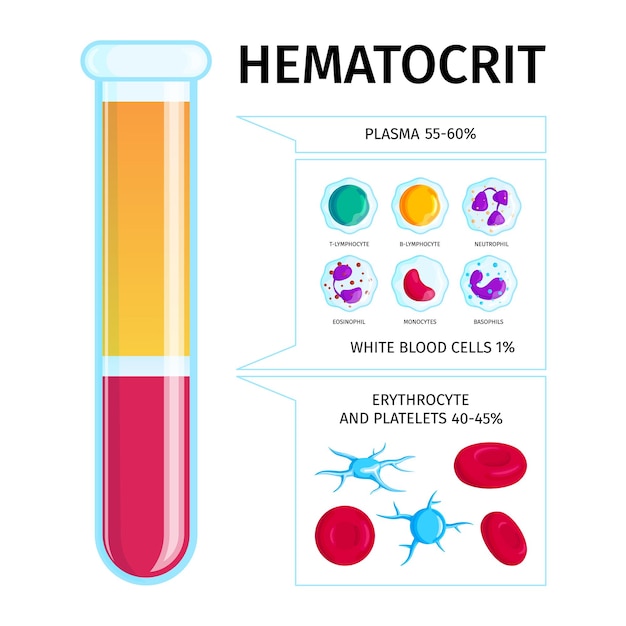

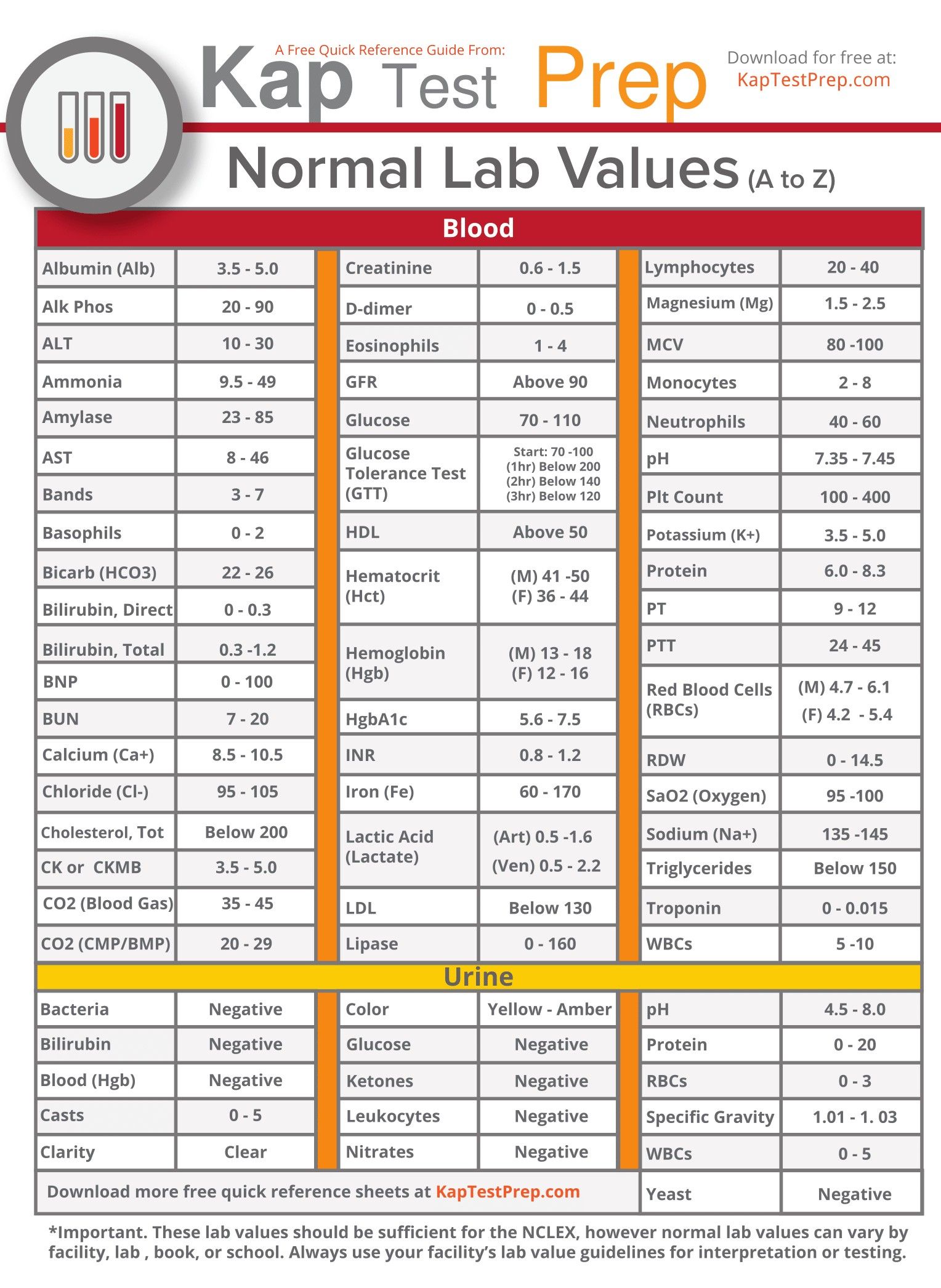

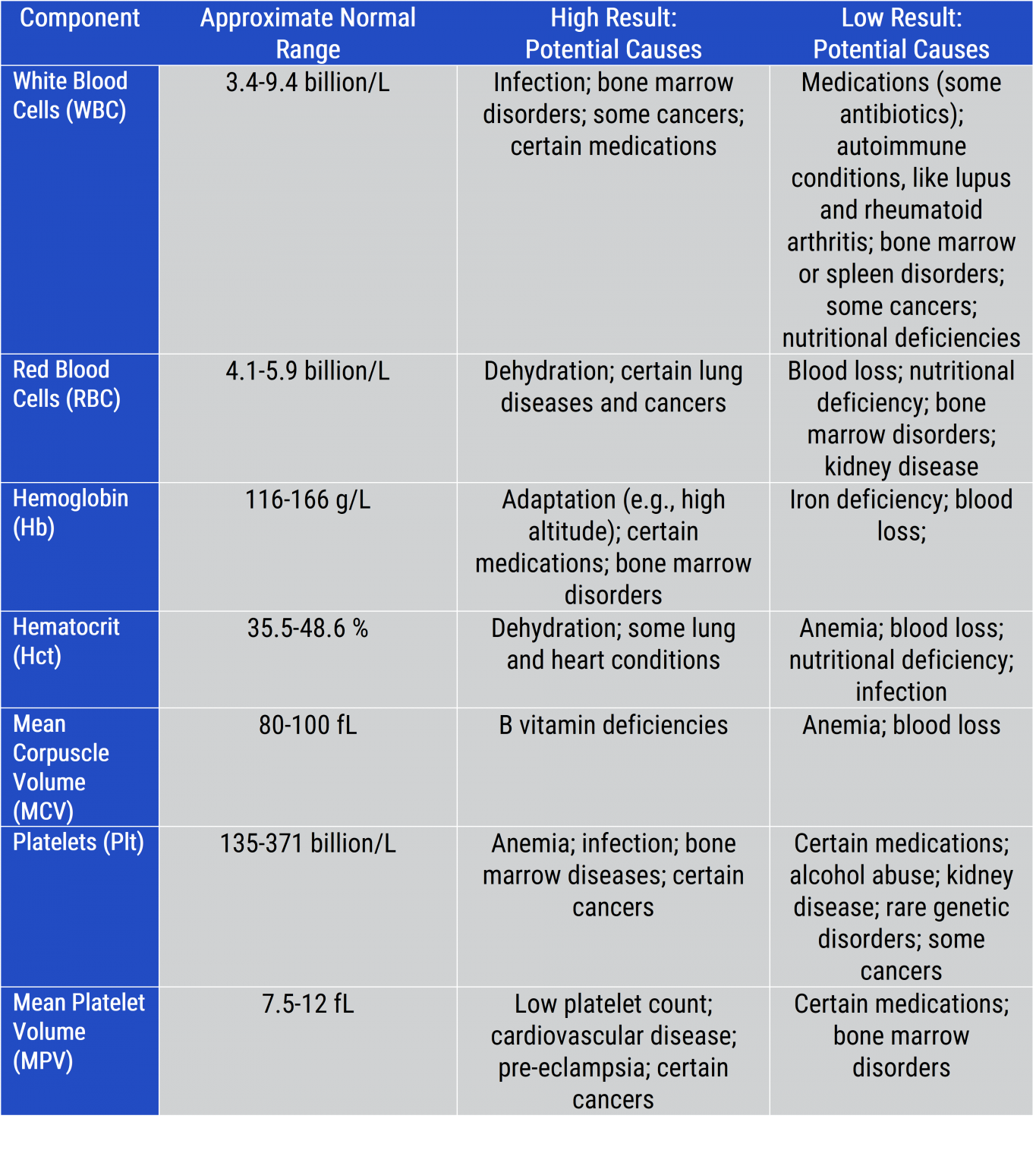 There is a tendency to appear with allergies and asthma.
There is a tendency to appear with allergies and asthma.
